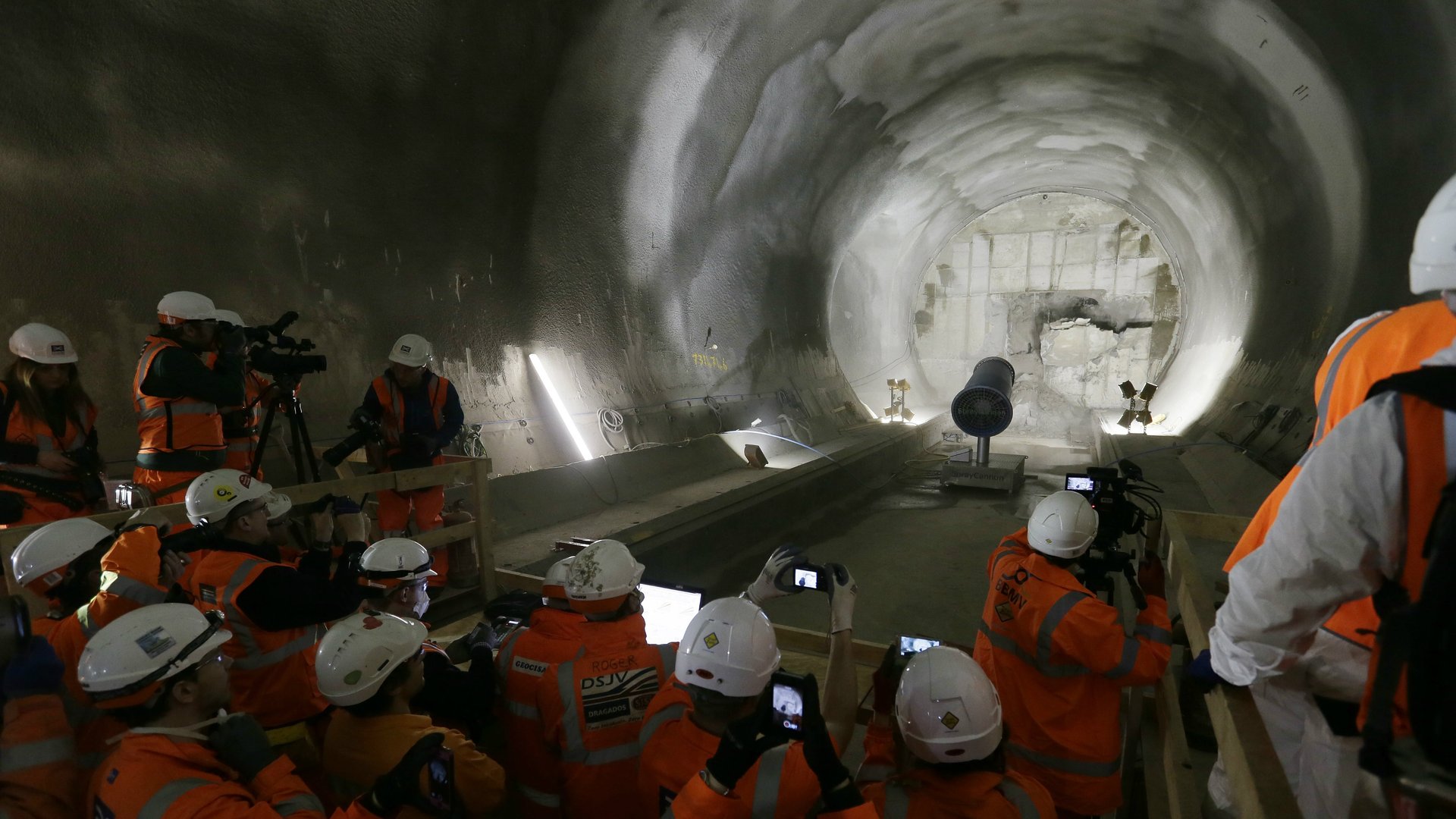How hard it is to actually dig a tunnel between two huge cities? Asking for a friend
All jokes aside, Elon Musk’s latest futuristic vision sounds awesome: a more than 200-mile tunnel that would transport passengers between New York and Washington in 29 minutes, not even enough time to catch up on Game of Thrones.


All jokes aside, Elon Musk’s latest futuristic vision sounds awesome: a more than 200-mile tunnel that would transport passengers between New York and Washington in 29 minutes, not even enough time to catch up on Game of Thrones.
Travelers would be carried at near-supersonic speeds in pods on Hyperloop, another Musk brainchild, which would transport riders through low-pressure tubes. Bookended by New York and Washington, tunnel route would also include Philadelphia and Baltimore, Maryland.
The Tesla founder announced in a tweet that he had “just received verbal govt approval” for the project, but as you can guess, building the world’s longest tunnel, let alone one that’s designed for all of the untested technology he envisions, is complicated, even if the White House is on board.
If for a moment, we could suspend our disbelief that local, state, and federal governments could all agree that this is a grand idea, what would it even entail?
A look at some underground engineering feats from the past few decades shows the incredible amount of time and money they require provides some clues:
Gotthard Base Tunnel, Europe
The $12-billion, 35-mile Gotthard Base Tunnel, which cuts under the Swiss Alps, became the world’s longest when it opened last year, knocking Japan’s underwater Seikan Tunnel to second place, which cost $7 billion. Workers used 30-foot wide boring machine to carve through the Alps. It took 17 years to construct and it shaves an hour off of the travel time between Milan and Zurich. Not only is it the longest but it is one of the deepest. In some parts, the track is 2.3 kilometers below the peaks.
Seikan Tunnel, Japan
This 33-mile tunnel between Japan’s islands Honshu and Hakkaido was painful to build, 34 people die—about half of it is underwater. Construction started in 1964 and it opened to rail service 1988, but the concept dates back to the 1930s.
London’s Crossrail, UK
Musk’s dream of a tunnel along the US east coast would traverse a densely populated region. How did London fare with building its newest commuter rail line, its first new underground line in 30 years. The £15 billion ($19.4 billion) east-to-west underground train system is set to officially open in 2018, nine years after drilling first began. The system will connect London to Heathrow Airport and suburbs around the city. To dig the 26 miles of tunnels, workers used eight nearly 500-foot long custom boring machines―two named Victoria and Elizabeth, naturally―fitted with a massive 23-foot wide cutting wheel.
Excavators found a few pieces of history (and former people) in the process.
The Channel Tunnel, Europe
Connecting France and the UK, the Chunnel opened in 1994, about six years after construction began. The idea for the tunnel between the two countries was first conceived by a French engineer in the early 19th century. Firmer plans later on were derailed by war and a fuel crisis. The high-speed Eurostar train linking London and Paris, which rides through the tunnel, is credited with stealing marketshare away from airlines on flights between Britain and the continent.
Second Avenue Subway, US
The idea for subway line along Manhattan’s East Side dates back almost a century. And the city’s first major subway expansion in 50 years was finally completed in late 2016. Cost: $4.5 billion for three new stops and the connection to an existing station. After that long wait, it is doing little to help the rest of the crumbling system.
For Musk’s idea, there are obstacles at every turn. The Tesla founder says his Boring Company has technology that can dig faster than traditional methods, reinforcing tunnel walls as it digs. Still, Hyperloop technology is still in early phases, despite some recent advances and enthusiastic governments around the world that want to offer testing grounds.
Any Hyperloop project would have to clear layer after layer of governmental review, including safety tests and federal and municipal environmental- and economic-impact studies. Then there’s the issue of money. Who would pay for this massive project and what would happen in an economic downturn if private funding were to dry up?
However wild, Musk’s vision remains on the right track—the alternative to car-choked cities and crumbling roads will be found in the sky and underground.